| If I Ran Star Trek, part one
By Michael David Sims
28 August 2018 — Since its debut in 1966, we've been graced with seven Star Trek television shows, 13 movies spanning two continuities, countless novels and short stories, a smattering of video games, and comic books across all major publishers. This has allowed Star Trek to cross into a multitude of genres and tackle different themes. From heists to family dramas, space action to coping with PTSD, ghost stories to coming-of-age tales. The vast Star Trek Universe provides an open-ended playground for any and all types of stories.
However, at its very core Star Trek is a Western. Each series has had this stamped all over it:
- Star Trek was sold as Wagon Train to the Stars.
- The Animated Series was more of the same, but a little more fantastical.
- While The Next Generation was headier than the two preceding series, there was no mistake it was still a Western.
- Deep Space Nine focused on an outpost stationed above a dusty world, with a hard-nosed widower for a sheriff.
- Voyager put the crew in unfamiliar and hostile territory.
- Enterprise showed us the origins of Starfleet and The Federation as one band of adventurers struck out to find new lands.
- And Discovery isn't that far removed from Enterprise and Voyager in its themes of exploring vast, strange territories.
The point is, as much as we may love and enjoy Star Trek, the creative minds behind the various television franchises always lean on the idea of Wagon Train to the Stars — be it the 1966 original series or 2017's Discovery.
All this said, what I'd like to do here today is present other ideas for Star Trek television programs. Ones that do not embrace the Western origins of Star Trek, go out on a limb, and push the boundaries of what Star Trek can be.
STARFLEET ACADEMY
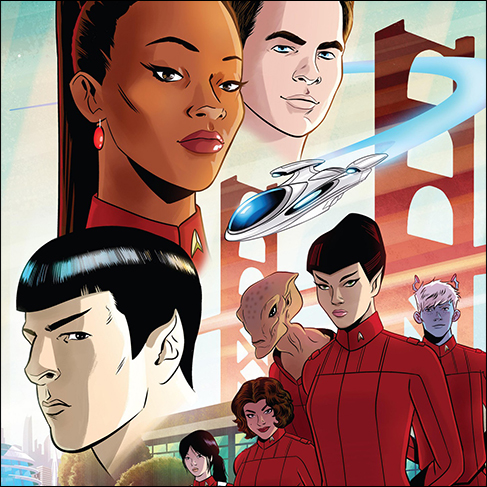
I can already hear you groaning.
A Star Trek show set only on Earth, following around attractive teens and young adults as they go through school, struggle with coming-of-age issues, and learning life lessons 45-minutes at a time.
Yes.
And no.
My vision for Starfleet Academy is not a clone of CW shows circa 2007. That model needs to be set aside for a good long while. But that doesn't mean it lacks virtue. While Starfleet Academy would feature coming-of-age stories, that does not mean that would be the thrust of the show.
Rather, I see Starfleet Academy as a way to explore what it means to be a member of Starfleet, to live within The Federation, to sometimes be blind to the horrors of the reality of space travel and exploration. A wide-eyed science student might join Starfleet Academy to explore strange new worlds, to seek out new life and new civilizations, to boldly go where no one has gone before. But the realities of exploration hit hard, especially on what's basically a military vessel. Also, and this was best said in the Deep Space Nine episode "The Siege of AR-558," humans are "a wonderful, friendly people, as long as their bellies are full," but "take away their creature comforts, deprive them of food, sleep ... put their lives in jeopardy ... and those same friendly, intelligent, wonderful people will become as nasty and as violent as the most bloodthirsty Klingon." When one lives inside The Federation, one does not see what the Maquis were forced to give up, they do not know what transpires in the outer systems, or even on a remote station like Deep Space 9.
And that's where this show would aim its sights. It would truly be about social justice. The Federation is all about the greater good; it's about bringing together different people and cultures to form something bigger and better together. But what happens when a planet doesn't want to join, when only half the population do, when a planet or system decides to leave The Federation? These questions about ethics will be posed to the students inside the classroom and out in the field.
Worf, Data, and Nog where all the first of their people to join Starfleet, and it took humans and other members of Starfleet a long time to accept these once-outsiders. A program like Starfleet Academy would look this dead in the eye to discuss bullying, accepting difference, and allyship. Even in Starfleet Academy there will be class and cultural difference; after all, most of the students will be barely out of high school.
"But, Mike," I hear you saying, "This sounds exactly like a CW show but with a Star Trek coat of paint."
I will give you that. For the moment.
Where Starfleet Academy will truly differ from a CW program is the Star Trek aspect.
Imagine the students taking Chief O'Brien's tech course; a guest lecture about empathy by Commander Troi; Geordi and Nog would have lots to say about being handicapped while on the battlefield; Seven of Nine could teach an entire class on The Borg Collective; and bring in Lieutenant Barclay to have frank talks about the ethics of the holodeck.
Speaking of the holodeck, here's one of the ways you get the students into adventures: thanks to modern CGI, it would be rather easy to recreate famous moments and battles we've already seen on Star Trek programming. Instead of limiting students to the Kobayashi Maru training simulation, throw them into the first meeting with The Borg ("Q Who"), put them in the captain's chair when Kirk took on his first Romulan ("Balance of Terror"), have them figure out how to communicate via metaphors on El-Adrel IV ("Darmok"). The students could learn history, battle strategy, no-win situations, diplomacy, and so much more via the programs and episodes we have already seen. While this would be used for a touch of nostalgia, it would also serve to solidify the events we've already seen as historical fact for these would-be Starfleet officers. Imagine studying for your history degree and having the opportunity to take part in picture-perfect, historically accurate recreation of the storming of the Bastille or the Haymarket Riots. Or pursuing your medical degree and having to apply field medicine during The Battle of Hastings or Waterloo. The learning experience would be incalculable.
How do we actually get them off-world, though? Through field trips to other planets, piloting missions between Earth and Mars, jaunts to home planets during summer holidays, and internships aboard vessels as the students progress through the program.
Best of all, there would be an ever-rotating cast. In season one we would be introduced to several freshmen, but also a few upperclassmen ready to graduate. When they do graduate, they could appear in other Star Trek shows, novels, comics, or games. Furthermore, once the freshmen move up to sophomore year, we get fresh faces in the form of new freshmen. Thanks to the four-year school cycle, Starfleet Academy could stay on the air for more than seven seasons.
For me, there truly is no downside to a Starfleet Academy-based program; it expands the universe, gives us something new, can explore the past, generates new characters, brings in guest stars in an organic manner, and reminds us why we love The Federation, Starfleet, and their principals.
SECTION 31
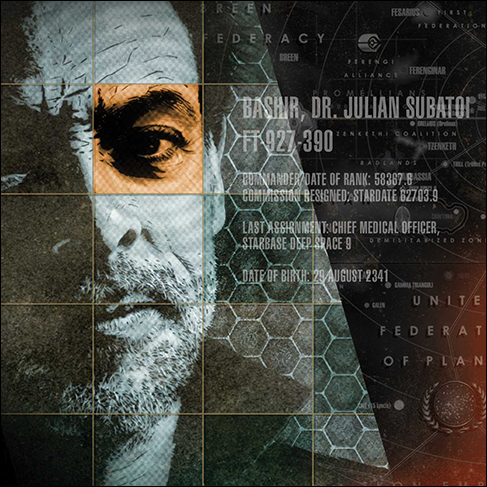
Speaking of The Federation's principles, let's discuss the underbelly of Starfleet: Section 31.
If you've never heard of Section 31, don't worry. You're in good company, as hardly anyone within Starfleet and The Federation have. It is a small, ultra-classified black-ops group with free reign to do anything — including spying and assassinations — to keep the peace within and outside of The Federation.
Though we only saw them three times in Deep Space Nine, Section 31 was shown to be a powerful, nasty branch of Starfleet. Their ranks were never fully revealed, nor was the knowledge of who within Starfleet knows of and sanctions their continued existence. The idea that a utopia, such as The Federation, could have a semi-authorized kill-squad is something that needs exploring. Hence, this show called Section 31.
In the vein of 24, Homeland, and Spooks (MI-5 in the US), Section 31 would reveal to us just how far people within The Federation are willing to go to keep up the peace. Moreover, just how far some are willing to go to save all life in the Alpha Quadrant. And even more, just how much of their souls they will sell to achieve said goals.
When the leader of Section 31 died on Deep Space Nine, it seemed the organization died with him. To that I say nay.
One of their goals was to recruit Doctor Julian Bashir into their ranks, but, ultimately, he refused and was able to keep his soul clean.
And that's where this show picks up.
Years after the fall of Section 31, Doctor Bashir finds himself once more being followed by the clandestine organization. This time, though, their sales pitch is better received. To save all life in the universe, to preserve The Federation, his genetically enchanted mind is a crucial tool. It can see the big picture and the smallest moves, the moving pieces and those yet played. Further, they want the good doctor to lead Section 31. Initially reluctant, when a new war breaks out between The Federation and Romulan Star Empire, it quickly becomes clear the Romulans have a grand plan for conquest while The Federation is putting out fires. Proactive v reactive.
Unable to stand ideally by as his civilization burns, Bashir accepts the offer. With one caveat: he can recruit anyone he wants. They agree. So Doctor Bashir contacts his old friend Elim Garak. Together they fake Bashir's death before heading into the mire that is Starfleet's shadow.
All this is the 90-minute opener. From there we'd explore the cost of peace and freedom, how much lives are worth in the grand scheme, and just what happens when a group like Section 31 fails to achieve its goals.
The beauty of Star Trek is that it is a reflection of our times.
- The original series put a mirror up to Vietnam.
- In the late 1980s and early 1990s, The Next Generation was very much a Reagan-era conservative notion of liberalism. (And vice versa.)
- Deep Space Nine's later seasons explored how far good leaders would go to maintain a façade of strength. And let's not forget its handling of religion, specifically emerging religious nations.
- And seasons three and four of Enterprise were very much a reaction to the September 11th terrorist attacks.
So what, exactly, would Section 31 hold a light to?
Turn on any 24-hour news channel and you'll be inundated with ideas for a spy program, be it set on Earth or space. Compromised politicians, meddling in elections and governments, warring over tiny pieces of land, the status of non-citizens and the handling of their children, sex, drugs, the legitimacy of the news itself. And this isn't me being political or pushing an agenda; these are all topics that are at the forefront of the news and our lives at this very moment. Pluck any one story from the headlines and it can seed an entire season of Section 31 — if not the entirety of the show.
If Starfleet Academy is designed to remind us that the future can be bright, Section 31 shows us the bloody cost to maintain that society.
ROMULAN STAR EMPIRE
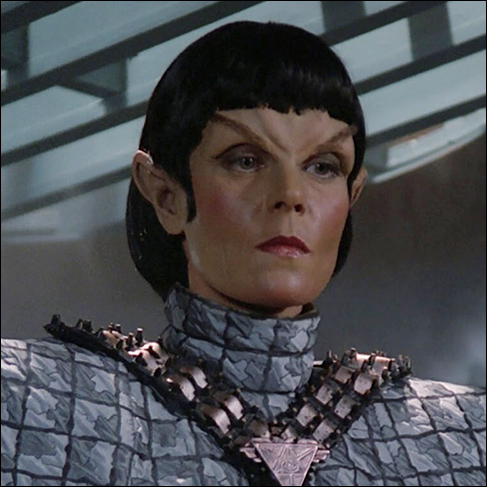
Outside of the first season of Discovery, not a single Star Trek program has focused much time on any society other than The Federation.
Yes, both The Next Generation and Deep Space Nine had numerous Klingon episodes, and the latter program did give us plenty of looks at the Cardassian government. However, we have never had a program that is exclusively about a non-human race. That's where Romulan Star Empire comes in.
Romulans are very much like their Vulcan cousins: cold and cunning. Where they differ, however, is that while Vulcans put their emotional restraint into the sciences, exploration, and the quest for peace, Romulans put their analytical brains into military might, conquest, and war. They are the Chess Masters of the Alpha Quadrant; once you realize the game is on, they've already played a dozen moves.
Admittedly, I have not seen a single episode of Game of Thrones, yet I intend Romulan Star Empire to be in its mold. Throughout the run of the show, we'd follow various Romulans as they live their lives, grab power, and fight tooth and nail to keep the Romulan Star Empire at the top of the political and universal food chain. In some ways Romulan Star Empire would mirror Section 31, but where Section 31 would follow Doctor Bashir, Garak, and their small band of spies and assassins, Romulan Star Empire would have a massive cast — all of whom would be expendable. From the Empress to the lowliest citizen, every Romulan would be a king in their own game of chess, yet a pawn in someone else's.
KHAN
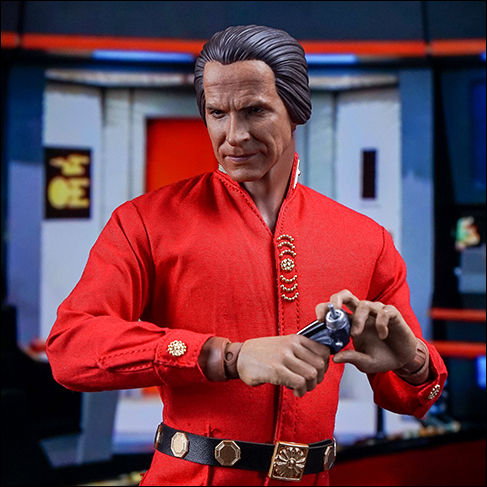
Initially I was thinking about suggesting a Star Trek program set during the in-universe World War III, but I'm not sure that would have legs. Instead, I would rather see one set during the brief period known as The Eugenics Wars. And, of course, our star would be none other than Khan Noonien Singh.
Through Khan, the program would tackle:
- The ethics of genetics, specifically modifying children.
- What it means to be an outsider.
- Fear of the other.
- Racial and class tensions on a pre-Federation Earth.
- The rise of a tyrant with a cult of personality.
- Making one's own family.
- The fall of an empire.
While the show wouldn't have to be topical — as many of the above-mentioned themes are evergreen — writers could choose to pull from current or recent headlines. Because, again, Star Trek has always been a mirror pointed directly at humankind. At its best, Star Trek reminds us what it means to be human, as well as what it means to be a member of a civilization. But what happens when that all breaks down; what happens when we allow ourselves to be corrupted by men who crave power?
I see Khan as a seven-season program, outlined as such:
Season 1: Basically, Khan Begins. We see the young, genetically modified man grow into adulthood. Always rejected, always spat on, always seen as an outsider because of the color of his skin and his modified genes. He's both feared and used by those around him. His strength makes him a tool to exploit — often in battle or for murder — but if he should realize his potential he would be unstoppable. So we begin to sympathize with the young man. Over the course of the first season Khan's kindness and cruelty are shown, but it's revealed the latter stems from how he was treated; he's perpetuating a cycle of violence and fear without even realizing it. Yet. Through the first season there are hints and rumblings and later outright nods to the world governments beginning to collapse. Having had enough, Khan contacts the other genetically modified humans and leads a revolt against humankind. The season ends with Earth subjugated by their own creations — with Khan having control of 1/4 the entire planet, specifically the Middle East and Asia.
Season 2: We pickup directly where the first left off. Khan and the others like him begin to form their own world government, but cracks show early. Many of the genetically modified leaders want to punish and torture their human oppressors, yet Khan insists on ruling with a light touch. Why perpetuate the cycle of violence? (Late in the first season or at some point during the second, he learns to treat his subjects with some compassion.) Why breed further fear and hate and suffering? This is an unpopular opinion, and though he has the largest share of the planet and is (reluctantly) considered the Ruler of Rulers, many express their dissatisfaction with Khan. So by the end of the season — after we've seen Khan and his ilk begin to reshape the world in their image — an attack is made on Khan's stronghold.
Seasons 3-6: Here we would see Khan's reaction to the attempted coup d'état by his former allies, the formation of his Round Table (we'd meet many of the 84 people seen or spoken about in "Space Seed"), how Khan is seen by the people, what he does with dissidents, the growth of his ego, Khan's plans to expand his empire into space, and quiet moments spent contemplating the morality of his actions. By the time season six ends, we see the people are beginning to revolt, and Khan knows his time on Earth is not long.
Season 7: Khan begins to prepare for the end. He secretly commissions stasis pods for his closest friends and allies, and gets his hands on what will become the SS Botany Bay. His empire cracks and crumbles as humans begin to push back. A lone voice for human self-rule grows louder and louder, leading to an eventual attack on Khan's base of operation. From here it's what we already know: Khan and the 84 other genetically modified people board the SS Botany Bay, subject themselves to cryostasis, and launch their ship into space — traveling and sublight speeds. The show ends with the SS Botany Bay drifting through space as a famous starship approaching from a distance.
The beauty of a Khan-centric TV program is twofold. First, it has a built-in ending. Even if it doesn't reach the planned number of seasons, one could pull the trigger on the fall of Khan's regime and his self-exile into space. The other is that, according to Star Trek lore, most of the records from this era were lost, destroyed, or are spotty at best. This means showrunners would not be beholden to pre-established continuity.
That said, the Star Trek timeline would have to be adjusted to some degree. Originally, The Eugenics Wars and Khan's reign took place in the then far-off future of 1992-1996. Since we're past that — and since a two-part episode of Voyager set in 1996 messed with the timeline already — I'd shift it to 2042-2046. Beyond shifting it for these reasons, ending Khan's reign in 2046 shrinks the gap between The Eugenics Wars and World War III from 53 years to a mere three. So my new proposed timeline is:
2024: The Bell Riots
2024-2041: Weak, ineffectual governments try to pick up the pieces of a broken society.
2042-2046: The Eugenics Wars / Khan's rule
2047-2048: More weak, ineffectual governments try to pick up the pieces of a broken society.
2049-2053: World War III
2054-2079: The post-atomic horror, and the advent of the human warp drive. (As an aside, said warp drive was invented in 2063, placing First Contact in this window.)
So while some fudging of continuity would have to happen, with in-continuity historical data being unreliable, it would be a very easy thing to say this is how it always happened; that the records, as told in "Space Seed," are wrong.
And before we move on, Khan would present us the opportunity to finally cast an Indian man in the role of Khan Noonien Singh. None of this bronzing a Mexican or whitewashing the role with an Englishman.
CAPTAIN WORF
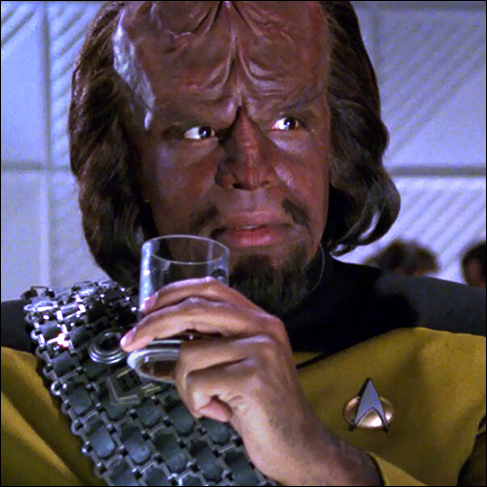
It had to come up. Everybody wants this. Michael Dorn has been championing the cause for decades, it seems. It would be amazing.
Problem is, it can't happen. During the season six episode of Deep Space Nine called "Change of Heart," Worf makes a decision that costs millions of lives. A decision, mind you, which also prolongs The Dominion War. On a personal level, it was the absolute correct decision for the man to make. On a career level, it was ruinous. On a military level, it was morally catastrophic. Had it not been a top-secret mission, Worf would have been court-martialed and / or jailed for life. As said episode closes, Captain Sisko tells Worf: "This will go in your service record. And to be completely honest, you probably won't be offered a command on your own after this."
That right there hinders Worf from ever leading his own crew.
Or does it?
Note in the quote that Captain Sisko said "probably won't be offered," not "will not be offered." This is our get-out-of-continuity card.
So, okay, Captain Worf!
Worf is best when he has a foil. When Worf is called out for his self-seriousness, Michael Dorn is given the ability to show Worf's sensitive side. And for my money, Worf's two best foils were Commander Riker and Lieutenant Commander Jadzia Dax. One got away with it because he was akin to a brother (and Worf's commanding officer), the other because she was Worf's wife. And both were right to do it. All the time.
So, who could be this foil? Riker is off commanding the USS Titan and Jadzia was murdered, so it can't be either of them. The answer is simple: Thomas Riker, the transporter duplicate of Commander William T Riker. How, through? He and Worf don't have the same bond as William T Riker, and they barely interacted in "Second Chances" — the episode which introduced Thomas Riker. Also, isn't Thomas Riker stashed away in a Cardassian prison? The answer is the plot of the show.
After an attack on said Cardassian prison, Thomas Riker is able to escape his jailers. Simultaneously, there are attacks on Starfleet's New Zealand Penal Settlement, a Klingon prison planet, and a Bajoran moon. A total of five people escape.
This is a quadrant-spanning conspiracy, and it's feared it could lead to a terrorist attack.
So: Starfleet, the Cardassian, Klingons, and Bajorans agree on two things:
- The conspiracy must be uncovered.
- All of the escaped prisoners must be recaptured.
To this end, Worf's exemplary experience as the Enterprise D's Security Chief gets him the job of captaining his own prison ship: a decades-old-yet-modified Andorian battle cruiser. He's pleased and honored for the opportunity. Or so he claims.
With a small, ragtag crew made up of people from all of the aforementioned races, Worf begins tracking down the escapees while uncovering the mystery.
In no particular order, Worf finds:
- Thomas Riker
- Ro Lauren
- Tasha Yar
- Berlinghoff Rasmussen
- Tuvix
Worf also uncovers the jailbreaks were orchestrated by Section 31. Upon learning it was an inside job from a branch of Starfleet, Worf doesn't know who to trust. After consulting his crew, as well as the captured prisoners, Worf goes on the run. Now he too is a criminal.
Some of you might be saying, "But, Mike, Worf would never run. He's a warrior. He'd stand and fight!" To which I would agree. Under other circumstances. But under these specific circumstances, anyone inside Starfleet could be compromised; anyone inside Starfleet could be working with Section 31.
Throughout the course of the program, Worf must outwit, outfight, and outrun every major Alpha Quadrant government all while attempting to solve the mystery of Section 31's actions. Also, why these prisoners?
During their voyage, Worf would bond with Thomas Riker, in whom he sees an honorable-but-broken man. And, coincidentally, Worf's ship would come across a small derelict. Inside would be one man: Alexander Rozhenko, his estranged son. Worf's relationship with his son, Alexander, would be repaired after years of damage. However, Worf would learn he is a grandfather, but Alexander has no contact with the child's mother. This greatly distresses Worf, because Alexander clearly followed Worf's lead when it comes to looking after his children. This leads to an entire storyline where they risk everything to reunite Alexander with his estranged wife and daughter.
But why these people? What would Section 31 want them free? Let's look at them:
- Thomas Riker: As mentioned, Thomas Riker is a transporter-created duplicate of William T Riker.
- Tasha Yar: While the prime universe Lieutenant Yar died at the whim of Armus ("Skin of Evil"), this Tasha Yar is the one who crossed time and reality during the events that led to the Enterprise C meeting its future counterpart ("Yesterday's Enterprise"). Though her daughter, Sela, said Tasha was executed after attempting to flee her Romulan captors, this is a falsehood. In truth, she had been held prisoner for decades.
- Berlinghoff Rasmussen: The rogue time-traveler from the 22nd century, not the 26th as he claimed ("A Matter of Time").
- Tuvix: Created during another transporter accident, Tuvix was the melding of the logical Vulcan Tuvok and the boisterous Talaxian Neelix. Though seemingly murdered in the Delta Quadrant by Captain Janeway ("Tuvix"), Tuvix was ripped through time and brought to the Alpha Quadrant.
- Ro Lauren: The insubordinate member of Starfleet and Maquis rebel. What's she doing here?
It should be clear that everyone on the list above, excluding Ro, should not exist. They were either born from transporter accidents, ripped through time, or crossed realities. But what of Ro? She becomes a mystery worth solving, and is the crux of Section 31's plans. In Captain Worf, I would reveal her parents shunted her into the prime Star Trek universe from the Mirror Universe. Why, though? To save her from the horrors of that universe. Buy how does Section 31 know this, and what do they want from her — and the others?
At its core, Captain Worf would be half Voyager (with a ship on the run in increasingly hostile territory) and half Enterprise (with Worf and his crew piloting a ship that is outmatched and outclassed by everything else out there). Now, okay, that might not be a ringing endorsement, what with those two programs being the proverbial step-children of the Star Trek franchise. But the core concepts of said shows were solid and worth mining for further exploration.
* * * * *
So, that's my take on potential Star Trek television programs. Hopefully you enjoyed this, as well as my attempt to stretch the legs of what Star Trek could be. With the initial success of Discovery and the imminent return of Jean-Luc Picard, hopefully CBS will return Star Trek to its television glory. It's a vast universe — rich with untapped characters and species and potential — and, when done right, it reminds us what it means to be human, what it means to embrace our differences, and what it means to actively make a brighter today for a utopic tomorrow.

.: about :: donate :: contact :.
© 2004-2026 its respective owners. All rights reserved.
|

